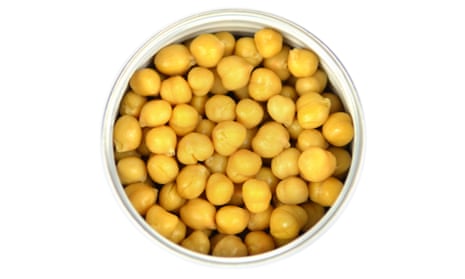The UK’s first commercial crop of chickpeas has been harvested in Norfolk this week.
Up to 20 tonnes of the legume – grown by four farmers across the UK – will eventually be dried and packaged by the Suffolk-based pulse specialist Hodmedod’s and will go on sale in mid-September.
Hodmedod’s co-founder Josiah Meldrum said: “We’ve been working on chickpeas for about five years, although a Norfolk farmer came to us earlier this year – so this is his first attempt. There are three other farmers growing for us and we know that at least one other UK company is looking at production here.”
Meldrum said the company was focusing on two broad categories of chickpea varieties: kabuli, which are the pale smooth round peas with which most of us are familiar, and desi, which have brown skins and are smaller and more wrinkled. Desi chickpeas are generally split and used to make chana dal and gram flour. Kabuli are canned or sold dried and sold whole, and also used to make chickpea flour (which has a significantly different flavour to gram flour).
“Chickpeas are a marginal crop in the UK,” Meldrum said, “and when we first tried them they seemed very risky – more likely to fail than succeed. It feels like that’s changing and the likelihood of success is weighted slightly in our favour now. Five years ago we were looking at failed trial plots and wondering whether chickpeas were a step too far.”
Two years ago the company launched the UK’s first commercial crops of lentils. That was followed last year by the first UK-grown chia seeds.
The recent shift towards “clean eating” and veganism has meant that pulses, lentils, peas and beans are seeing something of a revival.
The chickpea features prominently in Indian and Middle Eastern cuisine – it is a staple ingredient in hummus. While popular in the UK, it is usually imported from Asian countries. In 2017, India produced 67% of the global total.
Britons’ insatiable appetite for hummus was underlined by a 2013 survey that marked the UK as the hummus capital of Europe, with 41% of people having pots in the fridge – almost twice as many as in any other country. However, two years ago the country experienced a hummus crisis when supermarkets emptied their shelves of the mass-produced product amid complaints of an unpleasant metallic taste.
